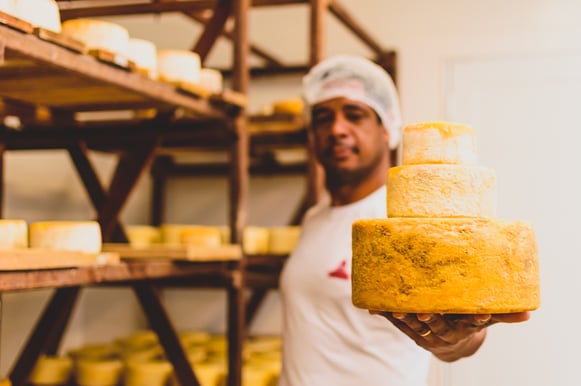Heat Exchanger Selection: Finding the Best Fit For Your Application
Sign Up for Maintenance Tips
Posted on Sep 21, 2021 4:00:00 PM by Penny Vander Velden | 3 min. read
When it comes to installing a thermal processing unit in your production line, it’s crucial that you find the right system for the job. You simply shouldn’t process your food, chemicals, or pharmaceuticals with the wrong heat exchanger model.
There are five different heat exchanger models that each fit a specific role in the thermal processing industry. By understanding what each system can offer your business, you can implement the most efficient heat exchanger for your production line, and get more out of your investment.
So, to help you along, we’ve created a heat exchanger selection guide so you can find the exact system that suits your unique business plan.
To start, it’s important to ask yourself a few questions.
Why Use a Heat Exchanger?
A heat exchanger is a system that transfers heat from one fluid to another without them contaminating one another. This is especially useful in industries that have a high sanitation standard such as the medical or food industry.
All heat exchangers transfer heat between a service fluid, and the product you’re looking to create. Depending on what you need for your product, this service fluid can be water, steam, ice water, or glycol.
Heat exchangers have a wide variety of uses including pasteurizing, crystallizing, sterilizing, heating, and cooling. But it’s important to know which heat exchanger models can perform each of these tasks most efficiently.
What Makes Each Heat Exchanger Model Unique?
Kettle
These heat exchangers have the simplest design and are therefore the most reliable. Kettle heat exchangers are tanks that contain fluids used to heat or cool products. They also include retention walls so they can transfer heat without the risk of the two media mixing or blending.
Plate Heat
You can imagine this system like a deck of cards stacked together with holes in each corner. But instead of having kings or queens, they have metal plates. These holes are gasket arrangements that create two separate channels. They run fluids between gasket channels in opposing directions, which allows heat to efficiently transfer between these fluids without them needing to touch.
Shell and Tube
Similar to the plate heat exchangers, these models have channels that run the product through tubes. However, instead of having gasket channels, the service fluid cascades around the product pipes, transferring heat in the process. Shell and tube heat exchangers often have several small product pipes to create more surface area for heat transfer.
Tubular
These heat exchangers are almost identical to shell and tube heat exchangers, but instead of a shell, they use a second larger tube around the outside of the product tube. Tubular heat exchangers are better for processing fluids with a high viscosity since they have one large pipe instead of several smaller ones.
Scraped Surface
This model follows the design of a shell and tube heat exchanger, but the key difference is giant rotating blades on the inside. These sharp blades regularly scrape the sides of each pipe, removing any crystallization caused by the product. While most plants use this model for sanitary reasons, some production lines will make use of the crystals themselves.
How Much Does a Heat Exchanger Cost?
When considering the cost of each heat exchanger, you need to take a few things into consideration. The first is the upfront cost of each system. Depending on which model you choose, the price could be anywhere from $25 (plate heat) to $2,500 (scraped surface) per square foot of heat exchanger.
However, it’s not uncommon to have a production line with multiple styles of heat exchangers. That’s why it’s important to know what models you need for your products.
You also need to consider upkeep and maintenance costs for your heat exchanger selection. For example, tubular and plate heat exchangers are fairly easy to maintain, but kettle and scraped surface models require more complicated upkeep.
The last thing you need to consider for your heat exchanger selection is uptime and repairs. Some heat exchanger models are durable and rarely break down, but others may develop complications more easily, leading to unexpected downtime.
Which Heat Exchanger Is Right For Me?
While every production line is unique and there’s no definitive way to know the most efficient heat exchanger model in every situation, we’ve outlined an example to help you with your heat exchanger selection below.
 In the dairy industry, plate heat exchangers are standard for pasteurization. Plate heat exchangers are efficient at quickly raising milk to the correct temperatures, and the low upfront cost of these units is another huge plus.
In the dairy industry, plate heat exchangers are standard for pasteurization. Plate heat exchangers are efficient at quickly raising milk to the correct temperatures, and the low upfront cost of these units is another huge plus.
Selecting the Right Heat Exchanger
There is no catch-all heat exchanger that works in every industry, but knowing what each heat exchanger brings to the table can give you a better idea of the most efficient heat exchanger for your business.
If your plant is looking to implement, repair, or replace plate heat exchangers, contact AGC for expert advice. We stock a wide variety of high-performance plate heat exchangers and provide customizable solutions that can fit into your existing production line.
Don’t gamble with your heat exchanger installation — call the pros at AGC today.

